Retention Rx: Healthcare Workforce Insights

Article: May 19, 2025 7 Minute Read
In today’s healthcare landscape, staffing shortages and burnout aren’t just HR concerns—they’re strategic challenges impacting patient care and organizational resilience.
In an effort to find opportunities that could address these challenges, we conducted a survey and research study that explored the perspectives, needs, and migration patterns of healthcare workers. The results offer insights into what healthcare employees truly value, where organizations are performing best, and where improvements are needed. Understanding these insights is essential for leaders seeking to attract top talent and create environments where they can thrive, ultimately enhancing patient care and organizational sustainability.
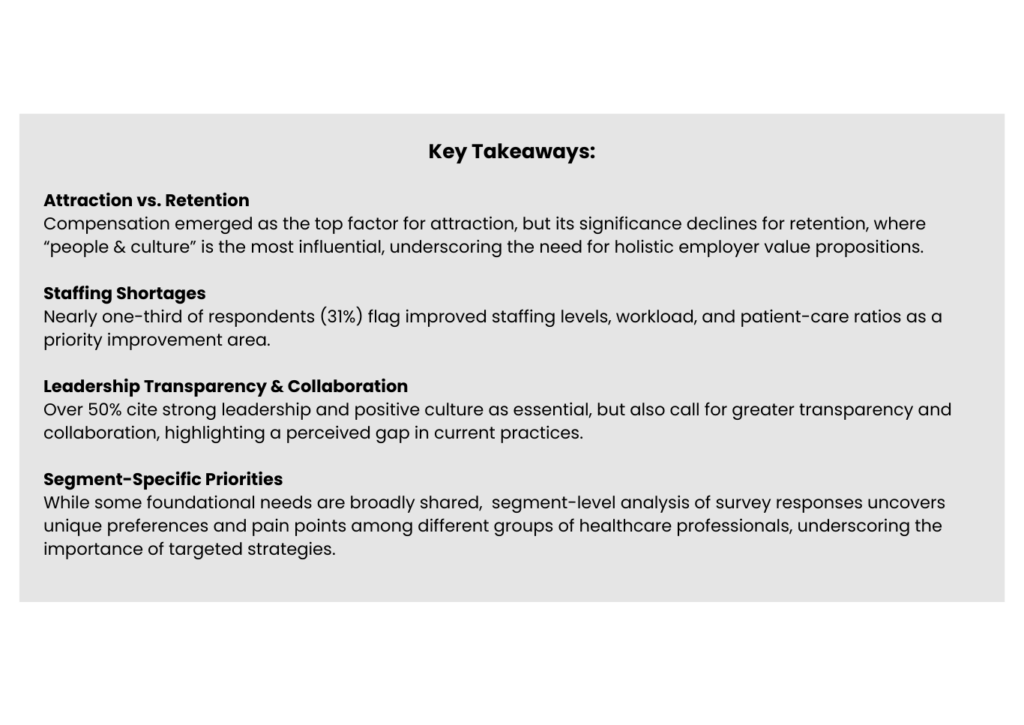
What Do Employees Truly Value?
When respondents were asked to identify the most crucial factors that make a healthcare organization a “top place to work,” compensation emerged as the fundamental expectation. Nearly 8 in 10 (77%) respondents said competitive pay and benefits were essential for a healthcare organization to qualify as a “top place to work.” This underscores pay as the entry point—a baseline requirement for attracting talent.
Yet, it doesn’t stand alone—over half (51%) pointed to strong leadership and a positive workplace culture as critical differentiators that are equally essential in setting top-tier organizations apart from the rest.
At the same time, about one-third of respondents emphasized the importance of work–life balance, clear career paths, flexible schedules, and adequate staffing. These factors corroborate that while competitive pay remains foundational, work-life factors have become increasingly influential, not optional, for healthcare professionals. They are now integral components for attracting top talent, underscoring a shift toward holistic employer value propositions as a benchmark in healthcare.
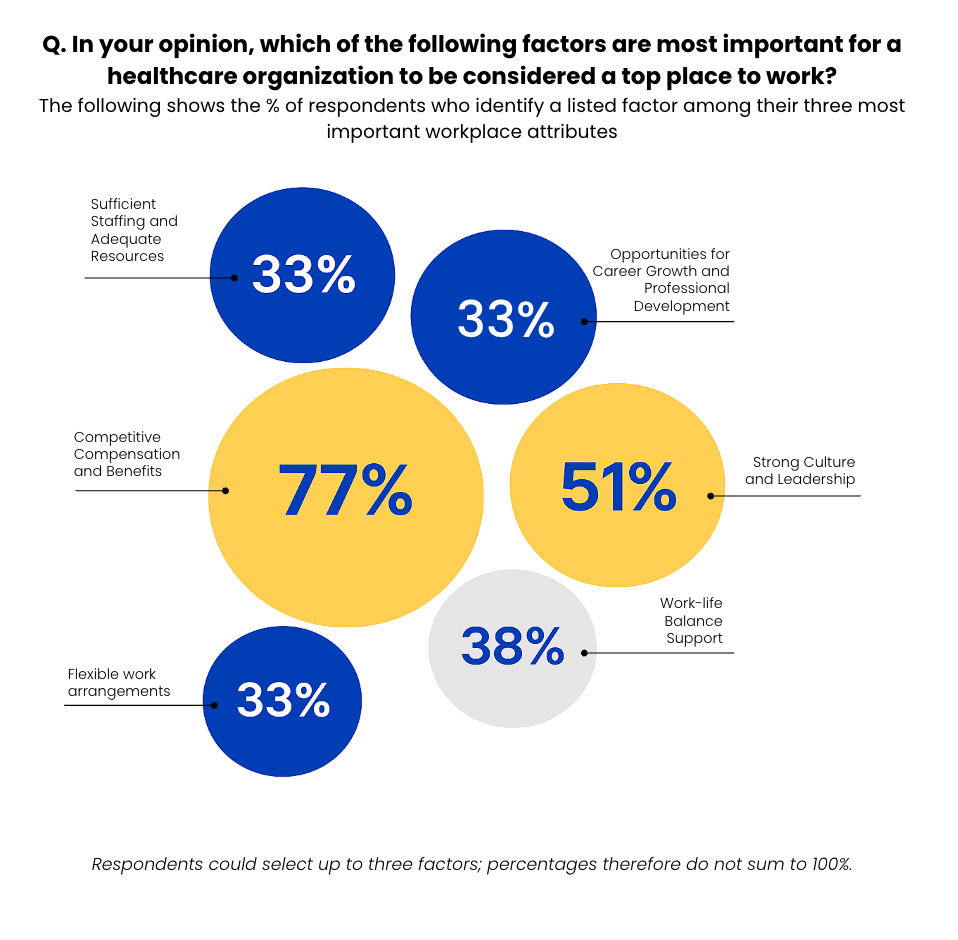
How Are Organizations Currently Performing?
In today’s competitive people market, retaining a highly-skilled workforce is important to the vitality of your organization. As younger generations enter the workforce, new technology emerges, and the labor market shifts, the needs of employees change in response. What an employee looked for a decade ago is far different than what an employee looks for today. Understanding ever-changing employee expectations is crucial.
When we asked “What is one thing your organization does well that makes it a great place to work?”, respondents highlighted a few key organizational strengths that positively shape their experience. Specifically, respondents’ emphasis on a supportive, collaborative culture (31%), highlights respectful interactions, teamwork and camaraderie as essential elements of a positive workplace experience. Additionally, supportive leadership (17%) emerged as a key strength. Flexibility and autonomy and a clear commitment to patient-focused care were also highly praised (at ≈12% each) .
Collectively, these findings emphasize that organizations successfully meeting employee expectations are those that prioritize supportive cultures, meaningful autonomy, and a shared dedication to exceptional patient care.
When it comes to retaining talent, new trends emerged. When asked explicitly why they remain at their current organizations, people and workplace culture emerged as the most influential factor in healthcare workers’ decisions to stay (35%), which overshadowed compensation (12%). Respondents consistently highlighted respectful, supportive colleagues and collaborative environments, signaling a clear difference between effective strategies for attracting employees and retaining them: while employees may be initially drawn to organizations due to compensation, they remain at an organization because of positive cultural dynamics. This finding underscores the strategic value of cultivating strong team dynamics and a healthy organizational culture in order to enhance employee engagement, reduce burnout, and secure long-term retention.
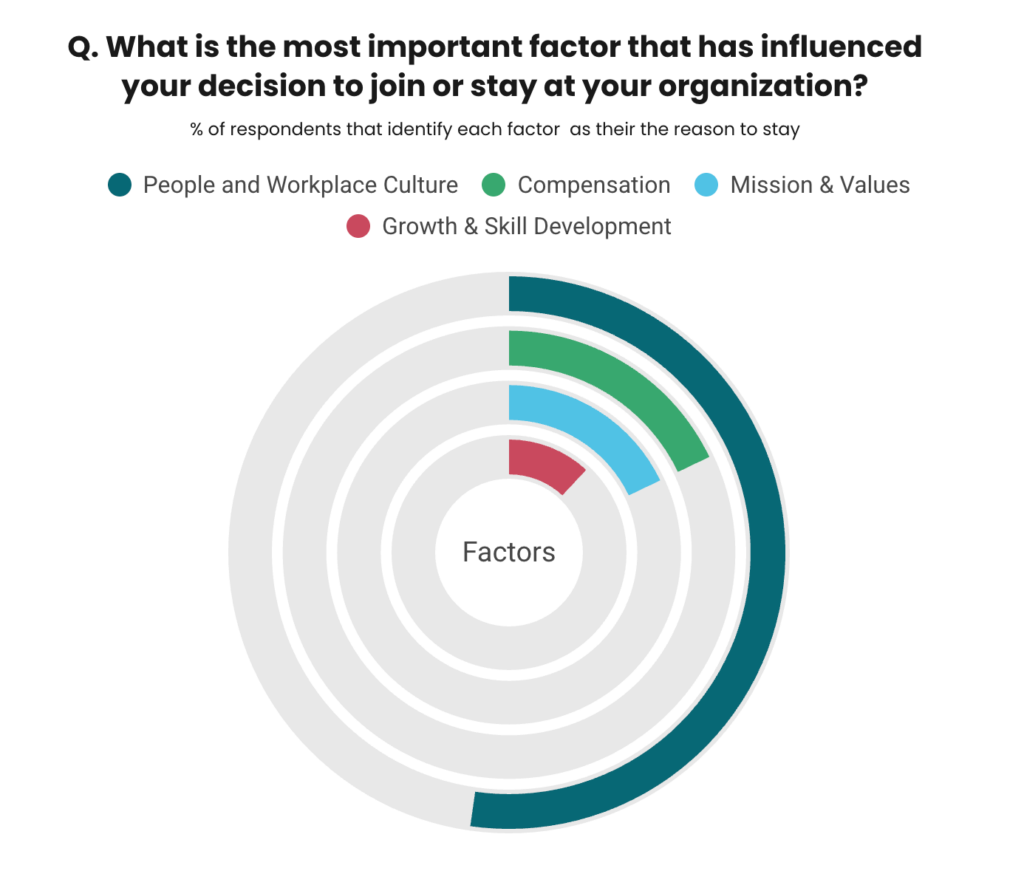
In essence, our findings revealed a reinforcing cycle: the organizational strengths that employees value – supportive culture, autonomy, and a patient-centered mission – are just not appreciated, but are key reasons that make them stay, reinforcing the importance of prioritizing these interconnected factors to effectively retain talent.
What Improvements Do Employees Want to See?
Our analysis shows that, on average, 31% would like to see their workplace increase staffing and improve staff-to-patient ratios. Employees cited consistent understaffing, high workload pressures, and administrative burdens as their primary stressors.
This call for more resources underscores a systemic and ongoing challenge impacting healthcare delivery and employee well-being. As a team becomes understaffed, the rate of burnout increases as healthcare workers have to fill in the gaps (HHS). While short-term incentives might offer temporary retention benefits, proper staffing should be top of mind as it is critical for the vitality of any organization.
Respondents also emphasized the need for more transparent, collaborative leadership and a patient-centered culture, underscoring that effective leadership directly shapes employee engagement, satisfaction, and organizational performance.
Healthcare Workplace Priorities: One Size Doesn’t Fit All
Our survey findings underscore the importance of developing tailored strategies that reflect the diverse priorities across healthcare roles, career stages, and generations. While some needs—like competitive compensation—are broadly shared, more nuanced insights reveal distinct preferences within specific workforce segments.
For example, clinicians, for example, place a significantly higher value on autonomy and flexible work arrangements than the general healthcare workforce—an insight reinforced by recent American Medical Association (AMA) data. At the same time, compensation plays a comparatively smaller role in clinician loyalty. Medscape research further supports this, showing clinicians are often willing to trade higher pay for improved work-life balance.
In addition, different priorities were highlighted among employees at different phases of their careers (additional details available in the survey report). These differences point to a clear opportunity: organizations must move beyond one-size-fits-all approaches and design strategies that reflect the unique motivations of their workforce segments. By recognizing and addressing varied needs for different employee segments, organizations can better attract, engage, and retain top talent, ensuring they retain a competitive edge in today’s dynamic healthcare environment.
Conclusion
The elements that initially attract healthcare employees differ from those that contribute to their long-term retention and engagement. While compensation is a significant initial consideration, the data suggest that strong cultures, supportive leadership, and meaningful autonomy are key characteristics of organizations that successfully retain their best employees and achieve excellence.
Organizations seeking long-term success should invest in interconnected, people-centric domains—such as trust, autonomy, adequate resourcing, and strong, people-first cultures. These elements attract, retain, and empower employees to deliver exceptional patient care, strengthening both employee well-being and organizational resilience while improving patient experience and outcomes.
Get the full report here.
By Linda Brito, Principal Consultant and Gilberto Orozco, Senior Director, Strategy and Operations Consulting | DSG Consulting is an award-winning boutique management consulting practice. As a member of the DSG Global family of brands , DSG Consulting helps bridge where your organization is today with what it can become tomorrow.
Related articles
-
?>
-

Insights
Retention Rx: Healthcare Workforce Insights
Article: May 19, 2025 7 Minute Read In today’s healthcare landscape, staffing shortages and burnout...
?>
-

Education, Insights, Thought Leadership
Should You Join the Search Committee?
If your institution is going through a leadership transition, you might find yourself with the...
?>
-

Education, For Job Seekers, Insights, Thought Leadership
So You Want to Be a Head of School: Guidelines and Guardrails for Independent School Aspiring Heads
You understand the assignment, as today’s kids say. You know the Head’s role well, perhaps...
?>
-
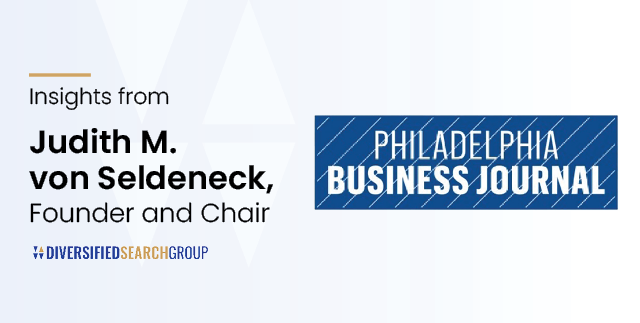
Insights, News Category
PBJ: Philadelphia must embrace change, collaboration to unlock full potential
Judith M. von Seldeneck, founder and chair of Diversified Search Group, discusses the importance...
?>
-

Insights, Thought Leadership
Shelly Storbeck On Repairing Trust on College Campuses
Shelly Weiss Storbeck, Strategic Advisor for Diversified Search Group’s Education Practice and the founder of...
?>
-
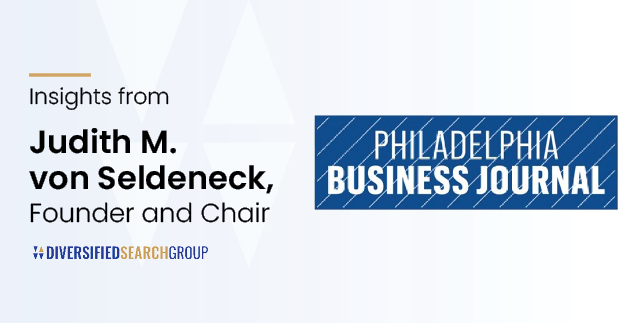
Insights
PBJ: Prioritizing AI is a necessity for leadership
Judith M. von Seldeneck, founder and chair of Diversified Search Group, explains that leadership must...
?>
-

Insights, Leadership
Leadership Tips for Economic Uncertainty
In economic uncertainty, leaders face many challenges. How you handle these challenges determines how well...
?>
-
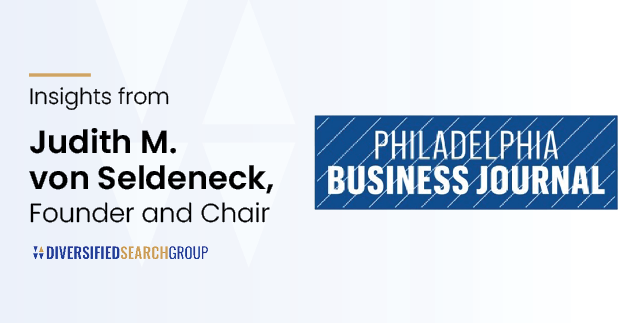
Balance, Insights, Leadership
PBJ: Navigating a hybrid and remote work environment
Judith M. von Seldeneck, founder and chair of Diversified Search Group, writes on the urgent...
?>
-

Balance, Insights, Leadership, Office Culture
Philly Inquirer: Business leaders tout hybrid offices, offer tips for success
Aileen Alexander, CEO of DSG Global, participated in a panel discussion as part of The...
?>
-
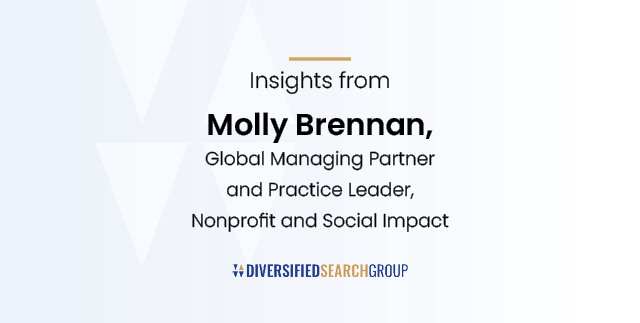
Insights
Pay Transparency: Navigating a New World
Pay transparency is rapidly becoming the norm in the nonprofit sector and, thanks to a...
?>
-
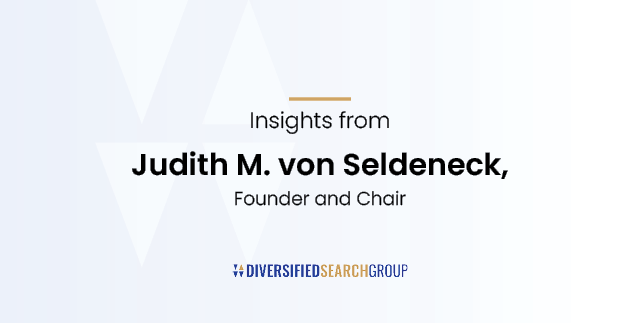
Insights, News Category
Philly Inquirer: Paid family and medical leave is good for employers, too
In this opinion piece, Founder and Chair Judith M. von Seldeneck explains why contributing toward...
?>
-
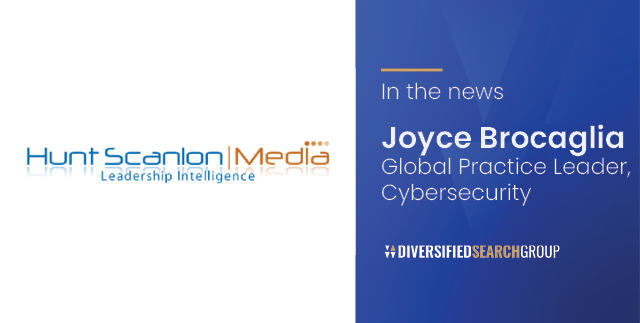
Cybersecurity, Executive Search, Insights
Hunt Scanlon: Heightened Demand for Cybersecurity Leaders Keeps Executive Recruiters Busy
Cybersecurity executives are in demand, and that’s something that won’t change as the economy softens,...